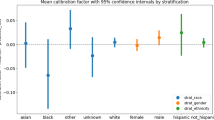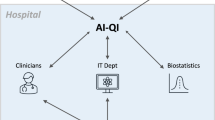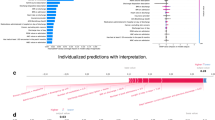Abstract
Healthcare institutions need modern and powerful technology to provide high-quality, cost-effective care to patients. However, despite the considerable progress in the computerization and digitization of medicine, efficient and robust management tools have yet to materialize. One important reason for this is the extreme complexity and variability of healthcare operations, the needs of which have outgrown conventional management. Machine learning algorithms, scalable and adaptive to complex patterns, may be particularly well suited to solving these problems. Two major advantages of machine learning—the power of building strong models from a large number of weakly predictive features, and the ability to identify key factors in complex feature sets—have a particularly direct connection to the principal operational challenges. The main goal of this work was to study this relationship using two major types of operational problems: predicting operational events, and identifying key workflow drivers. Using practical examples, we demonstrate how machine learning can improve human ability to understand and manage healthcare operations, leading to more efficient healthcare.
This is a preview of subscription content, access via your institution
Access options
Access Nature and 54 other Nature Portfolio journals
Get Nature+, our best-value online-access subscription
$29.99 / 30 days
cancel any time
Subscribe to this journal
Receive 12 digital issues and online access to articles
$119.00 per year
only $9.92 per issue
Buy this article
- Purchase on Springer Link
- Instant access to full article PDF
Prices may be subject to local taxes which are calculated during checkout







Similar content being viewed by others
Data availability
The clinical facility wait/delay time dataset described in this work is available from our web site: https://medicalanalytics.group/operational-data-challenge.
Code availability
The Matlab code used to analyse the clinical facility wait/delay time dataset is available from our website: https://medicalanalytics.group/operational-data-challenge.
References
Choy, G. et al. Current applications and future impact of machine learning in radiology. Radiology 288, 318–328 (2018).
Winasti, W., Elkhuizen, S., Berrevoets, L., van Merode, G. & Berden, H. Inpatient flow management: a systematic review. Int. J. Health Care Qual. Assur. 31, 718–734 (2018).
Zhao, Y. et al. Bottleneck detection for improvement of emergency department efficiency Bus. Process Manag. J. 21, 564–585 (2014).
Benneyan, J. C. An introduction to using computer simulation in healthcare: patient wait case study. J. Soc. Health Diabetes 5, 1–15 (1997).
Duguay, C. & Chetouane, F. Modeling and improving emergency department systems using discrete event simulation. SAGE J. 83, 311–320 (2007).
Ghanes, K. et al. A comprehensive simulation modeling of an emergency department: a case study for simulation optimization of staffing levels. In Proc. 2014 Winter Simulation Conference (IEEE, 2014).
Rossetti, M. D. Simulation Modeling and Arena (John Wiley and Sons, 2009).
Subramaniyan, M., Skoogh, A., Gopalakrishnan, M. & Salomonsson, H. An algorithm for data-driven shifting bottleneck detection. Cogent Eng. 3, 1–19 (2016).
Tayne, S., Merrill, C. & Saxena, R. Maximizing operational efficiency using an in-house ambulatory surgery model at an academic medical center. Found. Am. Coll. Healthc. Exec. 63, 118–129 (2018).
Attarian, D. E., Wahl, J. E., Wellman, S. S. & Bolognesi, M. P. Developing a high-efficiency operating room for total joint arthroplasty in an academic setting. Clin. Orthop. Relat. Res. 471, 1832–1836 (2013).
Schwarz, P. et al. Lean processes for optimizing OR capacity utilization: prospective analysis before and after implementation of value stream mapping (VSM). Langenbeck’s Arch. Surg. 396, 1047–1053 (2011).
Wolf, F. A., Way, L. W. & Stewart, L. The efficacy of medical team training: improved team performance and decreased operating room delays. Ann. Surg. 252, 477–483 (2010).
Subramaniyan, M., Skoogh, A., Salomonsson, H., Bangalore, P. & Bokrantz, J.A data-driven algorithm to predict throughput bottlenecks in a production system based on active periods of the machines. Comput. Ind. Eng. 125, 533–544 (2018).
Priore, P., Gómez, A., Pino, R. & Rosillo, R. Dynamic scheduling of manufacturing systems using machine learning: an updated review. Artif. Intell. Eng. Des. Anal. Manuf. 28, 83–97 (2014).
Thomas, T. E., Koo, J., Chaterji, S. & Bagchi, S. MINERVA: a reinforcement learning-based technique for optimal scheduling and bottleneck detection in distributed factory operations. In Proc. 10th Int. Conf. Communication Systems and Networks (IEEE, 2018).
Elhenawy, M. M. Z. Applying Machine and Statistical Learning Techniques to Intelligent Transport Systems: Bottleneck Identification and Prediction, Dynamic Travel Time Prediction, Driver Stop-Run Behavior Modeling, and Autonomous Vehicle Control at Intersections. PhD thesis, Virginia Polytechnic Institute and State Univ. (2015).
Fadlullah, Z. M. et al. State-of-the-art deep learning: evolving machine intelligence toward tomorrow’s intelligent network traffic control systems. IEEE Commun. Surv. Tutorials 19, 2432–2455 (2017).
Matsunaga, A. & Fortes, J. A. B. On the use of machine learning to predict the time and resources consumed by applications. In Proc. 2010 10th IEEE/ACM International Conference on Cluster, Cloud and Grid Computing (IEEE, 2010).
Joshi, M. V., Agarwal, R. C. & Kumar, V. Predicting rare classes: can boosting make any weak learner strong? In KDD ‘02 Proc. 8th ACM SIGKDD International Conference on Knowledge Discovery and Data Mining (ACM, 2002).
Freund, Y. & Schapire, R. E. A short introduction to boosting. J. Jpn. Soc. Artif. Intell. 14, 771–780 (1999).
Holbrook, A. et al. Shorter perceived outpatient MRI wait times associated with higher patient satisfaction. J. Am. Coll. Radiol. 13, 505–509 (2016).
Anderson, R. T., Camacho, F. T. & Balkrishnan, R. Willing to wait?: The influence of patient wait time on satisfaction with primary care. BMC Health Serv. Res. 7, 31 (2007).
Brandenburg, L., Gabow, P., Steele, G., Toussaint, J. & Tyson, B. Innovation and best practices in health care scheduling. NAM Perspect. 5, 1–24 (2015).
Dibble, E. H., Baird, G. L., Swenson, D. W. & Healey, T. T. Psychometric analysis and qualitative review of an outpatient radiology-specific patient satisfaction survey: a call for collaboration in validating a survey instrument. J. Am. Coll. Radiol. 14, 1291–1297 (2017).
Singh, S. C., Sheth, R. D., Burrows, J. F. & Rosen, P. Factors influencing patient experience in pediatric neurology. Pediatr. Neurol. 60, 37–41 (2016).
Kuhn, M. Applied Predictive Modeling (Springer, 2013).
Jaworsky, C., Pianykh, O. & Oglevee, C. Patient feedback on waiting time displays. Am. J. Med. Qual. 32, 108–108 (2016).
Bertsimas, D., King, A. & Mazumder, R. Best subset selection via a modern optimization lens. Ann. Stat. 44, 813–852 (2016).
Khalid, S., Khalil, T. & Nasreen, S. A survey of feature selection and feature extraction techniques in machine learning. In Proc. Science and Information Conference (Science and Information Conference, 2014).
Bottou, L., Curtis, F. E. & Nocedal, J. Optimization methods for large-scale machine learning. Soc. Ind. Appl. Math. Rev. 60, 223–311 (2018).
Dietterich, T. Overfitting and undercomputing in machine learning. ACM Comput. Surv. 27, 326–327 (1995).
Benjamin, A. S. et al. Modern machine learning far outperforms GLMs at predicting spikes. Preprint at https://doi.org/10.1101/111450 (2017).
Austin, P. C. A comparison of regression trees, logistic regression, generalized additive models, and multivariate adaptive regression splines for predicting AMI mortality. Stat. Med. 26, 2937–2957 (2007).
Mohri, M., Rostamizadeh, A. & Talwalkar, A. Foundations of Machine Learning (MIT Press, 2012).
Hastie, T. & Tibshirani, R. Generalized Additive Models (Chapman and Hall, 1990).
Dominici, F., McDermott, A., Zeger, S. L. & Samet, J. M. On the use of generalized additive models in time-series studies of air pollution and health. Am. J. Epidemiol. 156, 193–203 (2002).
Prasad, A. M., Iverson, L. R. & Liaw, A. Newer classification and regression tree techniques: bagging and random forests for ecological prediction. Ecosystems 9, 181–199 (2006).
Genuer, R., Poggi, J.-M. & Tuleau-Malot, C. Variable selection using random forests. Pattern Recognit. Lett. 31, 2225–2236 (2010).
Elith, J., Leathwick, J. R. & Hastie, T. A working guide to boosted regression trees. J. Anim. Ecol. 77, 802–813 (2008).
De’ath, G. Boosted trees for ecological modeling and prediction. Ecology 88, 243–251 (2007).
Haykin, S. Neural Networks: A Comprehensive Foundation (Prentice Hall, 1994).
Schmidhuber, J. Deep learning in neural networks: an overview. Neural Netw. 61, 85–117 (2015).
Olden, J. D. & Jackson, D. A. Illuminating the “black box”: a randomization approach for understanding variable contributions in artificial neural networks. Ecol. Model. 154, 135–150 (2002).
Hemaya, S. & Locker, T. How accurate are predicted waiting times, determined upon a patient’s arrival in the emergency department? Emergency Med. J. 29, 316–318 (2012).
Halford, G. S., Baker, R., McCredden, J. E. & Bain, J. D. How many variables can humans process? Psychol. Sci. 16, 70–76 (2005).
Iyengar, S. S. & Lepper, M. R. When choice is demotivating: can one desire too much of a good thing? J. Pers. Soc. Psychol. 79, 995–1006 (2000).
Acknowledgements
We acknowledge C. Crowley and other former and present members of the Medical Analytics Group who contributed to these projects.
Author information
Authors and Affiliations
Contributions
O.P. and D.R. conceived the study. O.P., S.G., D.P. and C.Z. analysed the data. All authors contributed to interpreting the results. All authors contributed to writing the manuscript.
Corresponding author
Ethics declarations
Competing interests
The authors declare no competing interests.
Additional information
Publisher’s note Springer Nature remains neutral with regard to jurisdictional claims in published maps and institutional affiliations.
Supplementary information
Rights and permissions
About this article
Cite this article
Pianykh, O.S., Guitron, S., Parke, D. et al. Improving healthcare operations management with machine learning. Nat Mach Intell 2, 266–273 (2020). https://doi.org/10.1038/s42256-020-0176-3
Received:
Accepted:
Published:
Issue Date:
DOI: https://doi.org/10.1038/s42256-020-0176-3
This article is cited by
-
AI’s fairness problem: understanding wrongful discrimination in the context of automated decision-making
AI and Ethics (2023)
-
Machine learning for real-time aggregated prediction of hospital admission for emergency patients
npj Digital Medicine (2022)
-
A versatile deep learning architecture for classification and label-free prediction of hyperspectral images
Nature Machine Intelligence (2021)
-
Medical Provider Embeddings for Healthcare Fraud Detection
SN Computer Science (2021)



